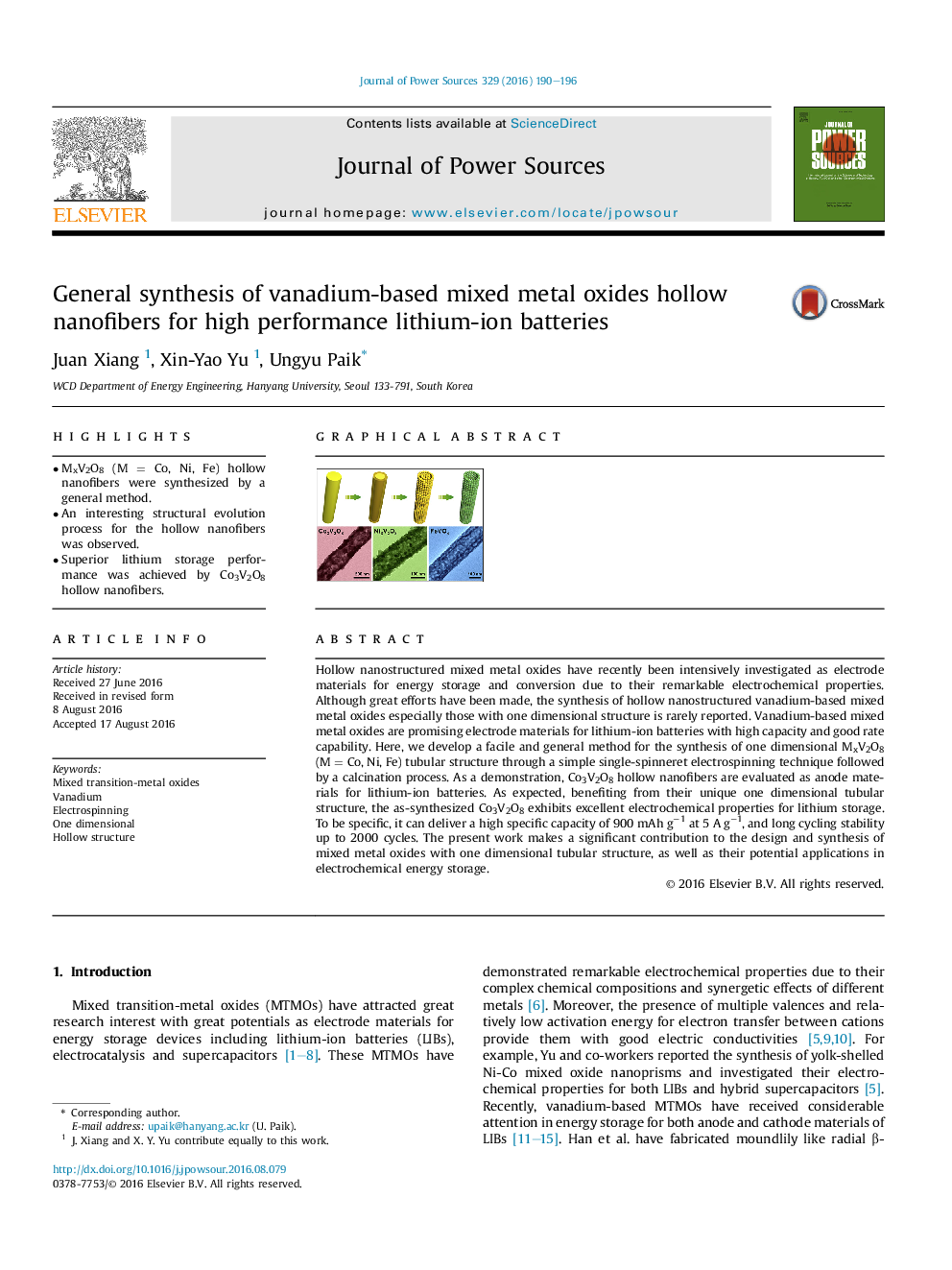| Article ID | Journal | Published Year | Pages | File Type |
|---|---|---|---|---|
| 1283390 | Journal of Power Sources | 2016 | 7 Pages |
•MxV2O8 (M = Co, Ni, Fe) hollow nanofibers were synthesized by a general method.•An interesting structural evolution process for the hollow nanofibers was observed.•Superior lithium storage performance was achieved by Co3V2O8 hollow nanofibers.
Hollow nanostructured mixed metal oxides have recently been intensively investigated as electrode materials for energy storage and conversion due to their remarkable electrochemical properties. Although great efforts have been made, the synthesis of hollow nanostructured vanadium-based mixed metal oxides especially those with one dimensional structure is rarely reported. Vanadium-based mixed metal oxides are promising electrode materials for lithium-ion batteries with high capacity and good rate capability. Here, we develop a facile and general method for the synthesis of one dimensional MxV2O8 (M = Co, Ni, Fe) tubular structure through a simple single-spinneret electrospinning technique followed by a calcination process. As a demonstration, Co3V2O8 hollow nanofibers are evaluated as anode materials for lithium-ion batteries. As expected, benefiting from their unique one dimensional tubular structure, the as-synthesized Co3V2O8 exhibits excellent electrochemical properties for lithium storage. To be specific, it can deliver a high specific capacity of 900 mAh g−1 at 5 A g−1, and long cycling stability up to 2000 cycles. The present work makes a significant contribution to the design and synthesis of mixed metal oxides with one dimensional tubular structure, as well as their potential applications in electrochemical energy storage.
Graphical abstractVanadium-based mixed metal oxides hollow nanofibers including Co3V2O8, Ni3V2O8, and FeVO4 are synthesized by a simple and general electrospinning and sequent thermal treatment method. As a demonstration, Co3V2O8 hollow nanofibers are evaluated as anode materials for lithium ion batteries, exhibiting excellent lithium storage properties with remarkable rate performance and impressive cycling stability.Figure optionsDownload full-size imageDownload as PowerPoint slide
